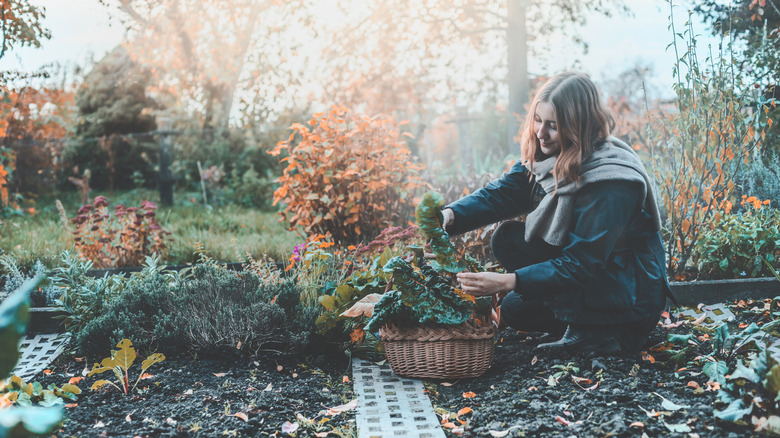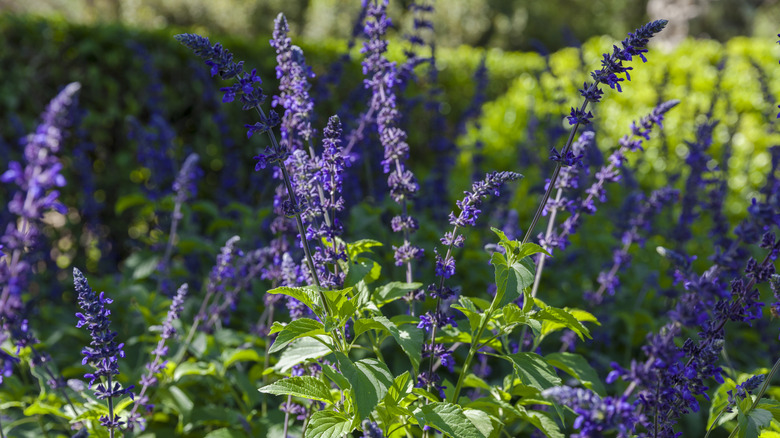Fill In Bare Garden Patches With A Fast-Growing Fall Perennial Pollinators Love
Does your garden feel lackluster or bare? As the weather gets cooler, your selection of garden staples may grow slimmer, leaving you with empty space in your garden in desperate need of use. While you don't want to over plant or overcrowd your garden, which can lead to negative effects on your plants, you can still add color and keep things looking lively even during the fall. Fortunately, with this fall perennial, you can do just that while also enjoying the added benefit of attracting pollinators.
Compact indigo sage (Salvia 'Indigo Spires') is a hybrid that sprouts with showy blue and purple tubular flowers that hummingbirds, bees, and butterflies absolutely love. It takes anywhere from 75 to 90 days to mature, making it a perfect last-minute addition to your garden. However, it begins blooming in the early summer and has a long blooming season well into fall, so you can plant it sooner for more time enjoying this eye-catching flower. Compact indigo sage also grows to be up to 3 feet tall—perfect if you're looking for a tall thriller plant to round out your garden.
If compact indigo sage sounds like the right plant to fill in the bare patches and start your pollinator garden, you may want to learn more about how to plant it, including what it needs and where it thrives.
How to grow compact indigo sage
To give compact indigo sage the best chance at growing successfully in your garden, start with its location. This means paying attention to details such as USDA Hardiness zones, soil, and light. For hardiness zones, compact indigo sage grows in zones 8 through 10. It needs soil with good drainage and plenty of nutrients, although it can handle a range of pH levels. When it comes to sunlight, aim to grow this flowery plant in a sunny part of your garden. It does best when exposed to full sun. In the latter end of its growing zone, you may want to opt for partial shade to protect it from hotter weather.
Overall, compact indigo sage is low-maintenance, making it perfect for beginner gardeners who want to add color and life to their garden while attracting pollinators to their yards. Since this plant can spread, it's a great way to fill up those bare spaces in your flower beds, but you may want to prune it to keep it confined to your garden. Deadheading is also needed to enjoy those vibrant wildlife-friendly blooms. Other than that, providing this plant with enough hydration to keep the soil moist without becoming waterlogged will sum up the bulk of your day-to-day chores.

